Menu
Menu

Make your own paintbrush – types of strokes
We often use, but rarely question the paintbrush. In most cases the paintbrush is designed to give uniform colour coverage using tightly bound natural or synthetic hairs.
By making our own brushes out of found materials we can have fun creating our own unique tools, recycle discarded materials, and create some very interesting painting textures.
All you need to do is start with a stick and some twine or wool. The stick can be found in the garden and would be best at around the diameter of your thumb.
Consider the following materials as ‘bristles’ : feathers, wool, strips of fabric, hay, cardboard strips, ribbon. In my example I used a few stems from a plant in the garden, some cotton buds, and some scraps of leftover materials from my sewing basket.
Some of these materials would make durable or reusable brushes, while others would be for just a single use. Certain bristle materials would best suit watercolour paints (the absorbent materials), while others would be best for acrylic (the harder materials). But the best thing to do is just have a play.
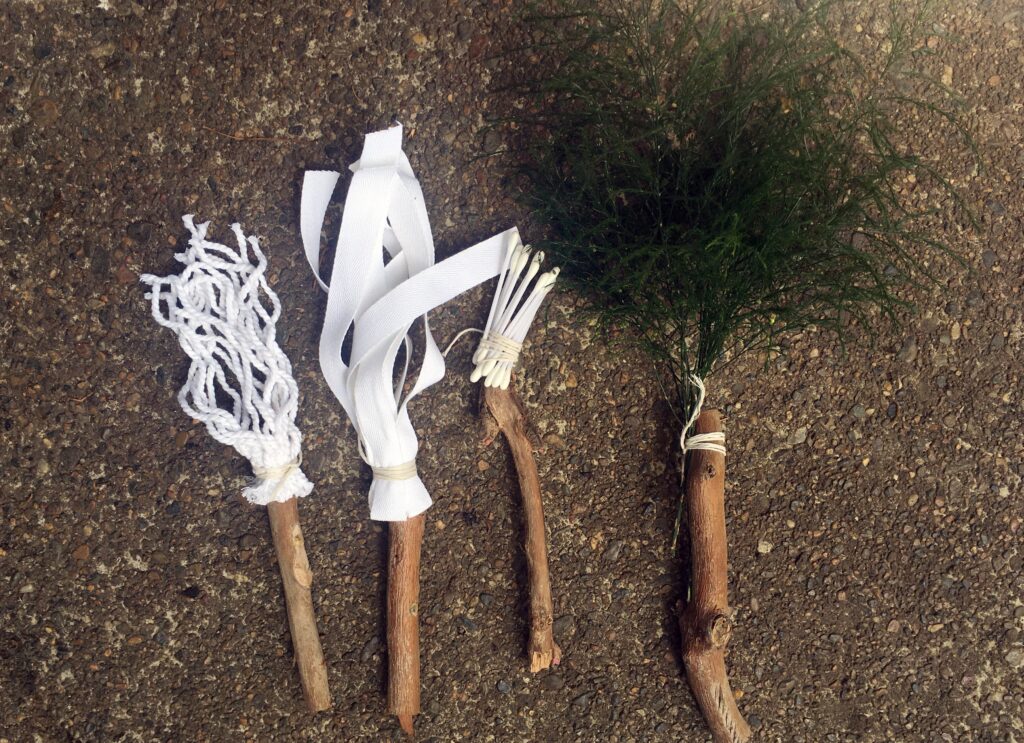
Method:
Take your stick and tie a secure knot with the wool at one end. Now bundle your found bristles next to this knot. Tightly wind the wool around the stick and bristles again and again to secure them at the end of the stick. Wool is great because it has some stretch to it and so will keep those bristles from wiggling loose.
Experiment with the brushes using paint on card or paper.
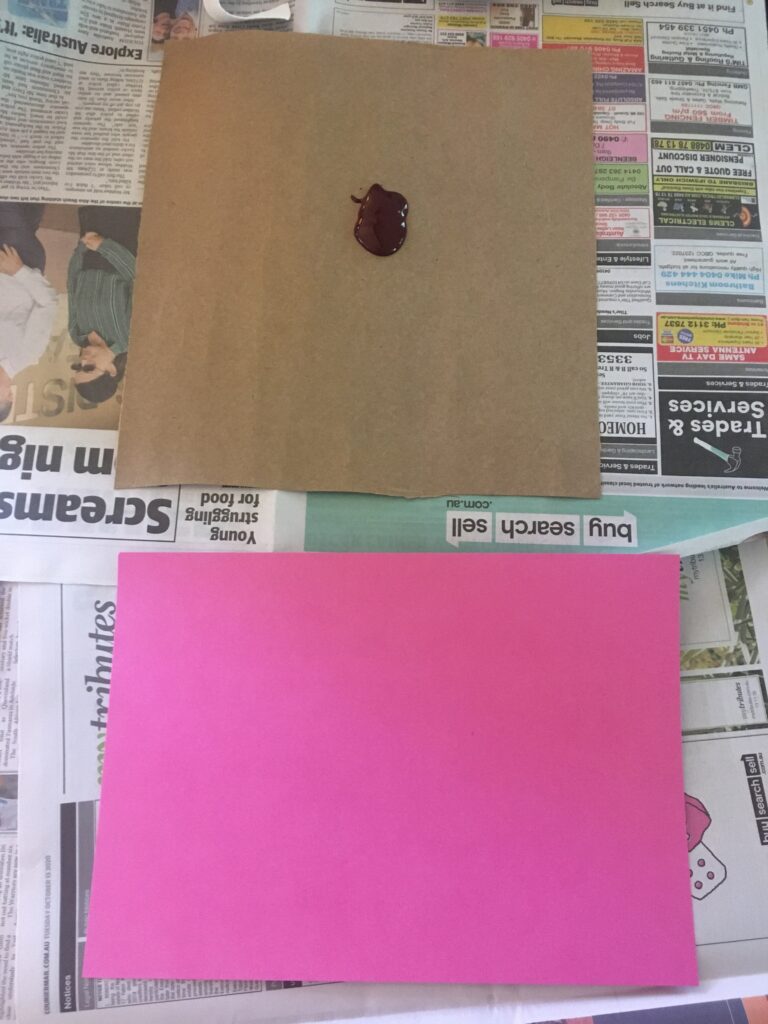
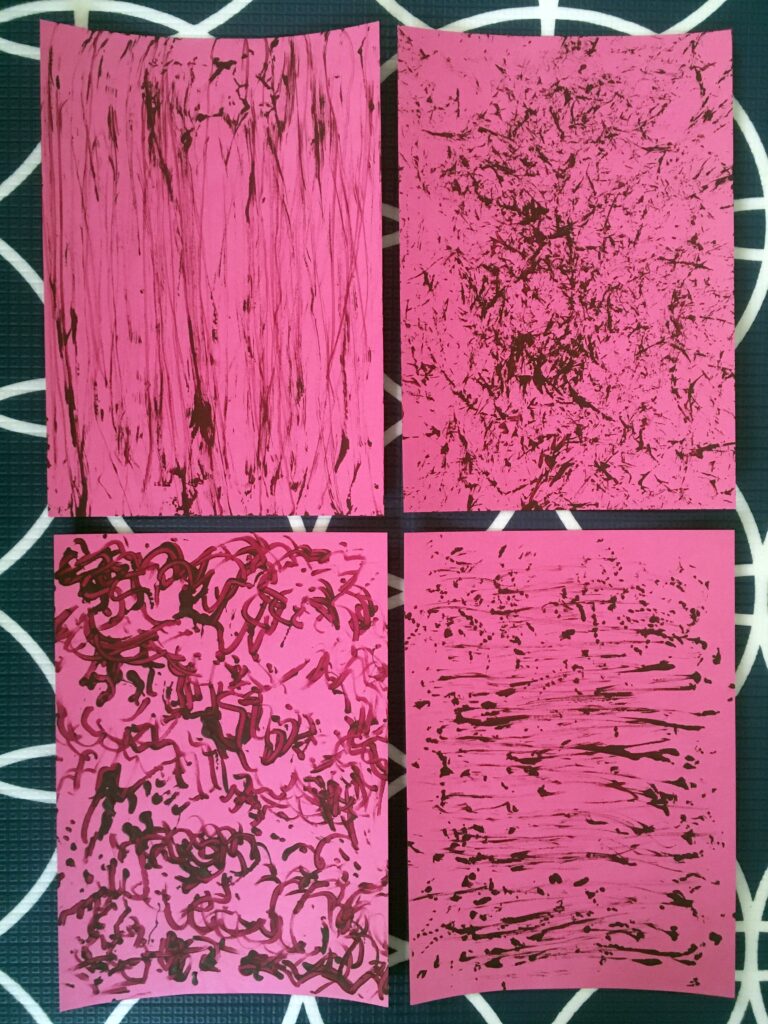
You may love these effects just as they are, or the results may inspire your next creative move! I enjoyed the textures so much I turned them into a collage mosaic on some contrasting card. I cut each print up into smaller pieces, arranged, and glued down.
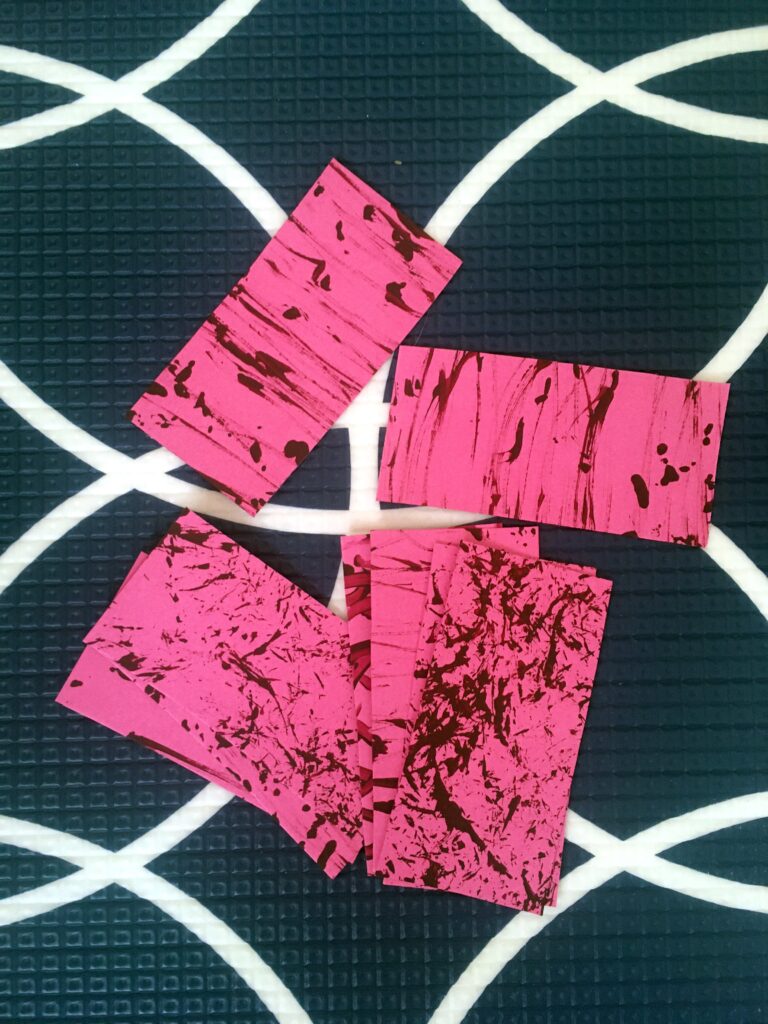
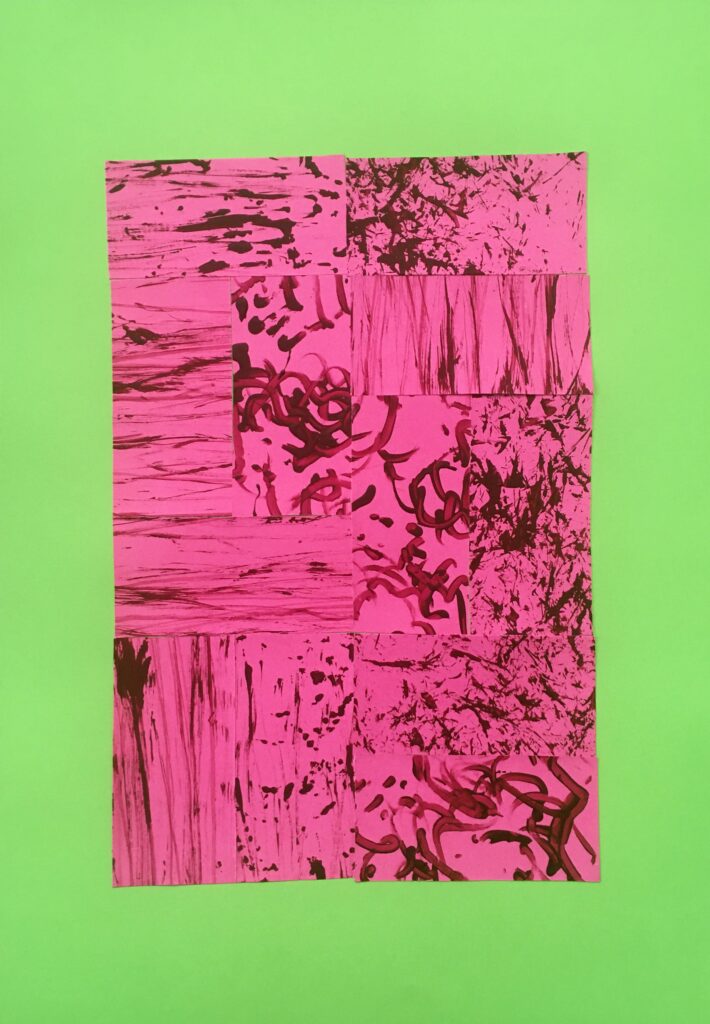
Try making marks using different coloured paint, onto different coloured paper or card for even more creative scope.
A fun project that brings together inventiveness, being resourceful, problem solving, and exploring concepts such as line, texture, contrast.
I hope this idea inspires you to think creatively with what resources you have available to you – and to get your little people making and creating!
Let us know what you think about this project (and our other ideas also), by leaving a comment. And let us know if there is a theme, process, technique you would like us to share with you.
Until next time,
Tracy x
Inspire your students to think and learn in new and exciting ways. Book a RAW Art workshop for your class today.
We will be in touch within 48 hours.